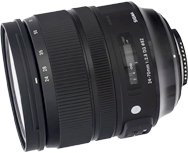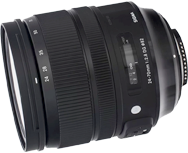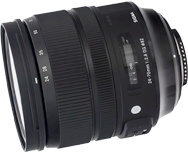Description
xSigma is more active than anyone else in this space, with not only an Art series 24-70mm f/2.8, but also a faster and shorter-range 24-35mm f/2 , so it’s interesting to compare the performance of these with others lenses sharing a Nikon mount, including the well-liked Nikon model and its equally-respected predecessor.
The Sigma Art series 24-70mm f/2.8 lens’s overall score of 31 on the Nikon D810 puts it 5 points behind the maker’s 24-35mm f/2, which is a noticeable margin. We expected the new lens to be closer.
In this section, we’re going to compare the Art series lens with the original Sigma 24-70mm IF EX DG HSM lens and the stabilized Nikon AF-S Nikkor 24-70mm f/2.8E ED VR.
We tested all three lenses on the full-frame 36MP Nikon D810 to make the results directly comparable.
(In our our test of the Canon-mount version, you’ll get an idea of how the Sigma Art lens fares against the Tamron and Canon models.
In case you’re wondering, the Sigma isn’t a match for the Canon, which retains its position as the gold standard for this category.)
From our tests, it is clear Sigma prioritized sharpness across the frame (that is, the image field)
at each focal length and aperture over outright sharpness, something that we’re seeing more frequently with modern designs.
Still, we were expecting a greater increase in sharpness over the previous model.
The acutance profile below shows the sharpness profile of the three lenses at their longest focal length and at f/2.8. Closing down the apertures increases sharpness to f/5.6-8, whereas after at f/11, all three begin to exhibit some diffraction and score below 70% acutance.
- Choosing a selection results in a full page refresh.








